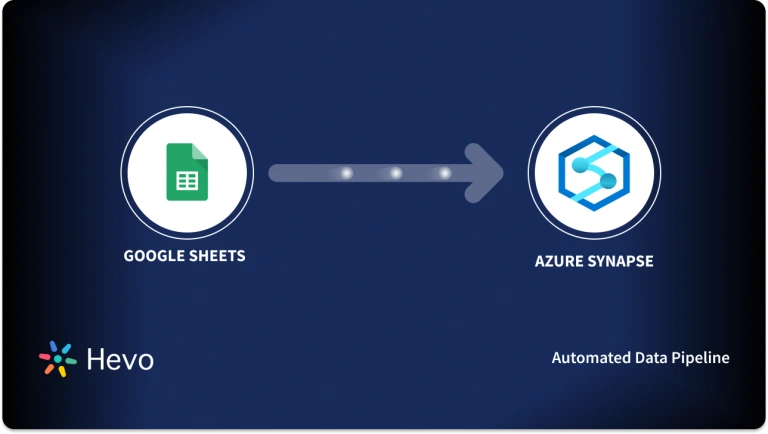In this digital era, it is crucial to track how your marketing campaigns are performing, what is your customer behaviour, how many new users are visiting your websites and many more. Google Analytics is such a tool that measures all your website traffic and provides analytical insights from those data.
However, sometimes, there is a need to perform a more detailed level of analysis, and for this you need a more robust data manipulation tool. In this article, you will walk through a straightforward approach to connecting Google Analytics and Google sheets to get better insights.
Table of Contents
Introduction to Google Analytics
Google Analytics is a cloud-based product offered by Google. It is an open-source analytical tool that analyzes and reports website traffic and customer behavior.
The Google Analytics dashboard has a comprehensive list of features and can integrate with different platforms with ease. It is a trendy choice for industries due to its reporting capabilities that drive their business decisions on customer behavior and interaction.
Features of Google Analytics
Some of the features of Google Analytics are listed below:
- Google Analytics automatically collects all the information from the website, like traffic, region, users, clicks, etc., and generates extensive analytical reports.
- Google Analytics dashboard allows you to understand customer behaviors, their interaction with your products, the reasons for bouncing off, source platform, lead generation, and many more.
- Analytics dashboard can help you to study the competition and drive strategic decisions based on the customer segment and engagement.
Introduction to Google Sheets
Google Sheet is an online Spreadsheet tool provided by Google platform and is very similar to Microsoft Excel. Google Sheet is a cloud-based spreadsheet and allows you to access the content over the internet.
Features of Google Sheets
Some of the major features of Google Sheets are listed below:
- Google Sheet has an integrated app for almost all operating systems, and it allows you to access your document from anywhere.
- You can access Google Sheet from desktops, mobile devices, tablets with excellent Android, Mac, and Windows support.
- Google Sheet is free to use, and you can use it with your existing Gmail account.
- Google Sheet is like Microsoft Excel, and if you’re familiar with Excel, Google Sheet will be easy for you.
- You can download the plug-in, add-ons, and custom code to analyze data in spreadsheets effectively.
Steps to Connect Google Analytics and Google Sheets
Now that you have learned about the features of Google Analytics and Google Sheets, let’s see how you can connect Google Analytics to export the data to Google Sheets. In this blog, you will use Google Analytics Spreadsheet Add-on for this integration.
The Google Analytics spreadsheet add-on can quickly bring the data from Google Analytics to perform data manipulations in Google Sheets. With this Add-on, you can query and report data from multiple views.
- List and perform custom calculations.
- Create Charts, Graphs, and other visualizations that can integrate with any third-party website.
- Refresh and schedule your reports to run and update automatically.
- You can share the Sheet with peers/colleagues and control who can see the data by setting up the sharing and privacy features.
Let’s have a step-by-step approach to installing the add-on and creating reports.
Step 1: Installing the Add-on
You need to add the Google Connector Plugin to your Google Sheet. Below is the step-by-step approach on how you can install the plugin.
- Login to your Gmail account and create a new Google Spreadsheet or open an existing one.
- Update the name of the Spreadsheet, and from the menu bar choose Add-ons > Get Add-ons.
- On the dialogue box, search for Google Analytics Add-on and select.
- Click on the “+” sign at the top-right corner of the dialogue box to add this Add-on on your Spreadsheet.
- Allow permission to access your Google Analytics data and click Accept.
- The add-on is now installed. A “Google Analytics” submenu should now appear in the Add-on menu.
Step 2: Creating Reports
As you have successfully installed the Connector, let’s see how you can create reports on Google Sheet by using this Connector.
- Once that Add-on is installed, go to Add-ons and then you’ll see the Google Analytics add-on added on the menu bar.
- Click on Google Analytics and click Create New Report.
- A panel displays on the right side that will allow you to add Google Analytic account information and other details.
- Enter the name of the report, select the account information and metrics and dimensions.
- Once you provide all the information, select Create Report.
- A new tab named “Report Configuration” will be added to the Google Sheet.
- Column B will display the parameters that will be sent across Google Analytics API.
- Go to the Add-ons on the menu bar, and select Google Analytics and then click “Run Report”.
- A new tab is added once the report generates that contain the users, added in the past seven days.
Voila! You have successfully integrated.
Note: If you want to create more reports, you can repeat the above steps. Each report adds a new column of data on the right side of the previous report.
Learn More About:
- Understanding Google URL Builder
- Understanding Google Data Analytics
- Using Google Sheets as a Database
Conclusion
That’s it. Isn’t it simple to integrate data? Now you can use the above, imported data to create charts, graphs, or you can create time-series analysis to find out how many users are visiting your webpage and many more. But, if you are looking for a fully-automated solution, then try Hevo.
Share your experience of connecting in the comment section below.





